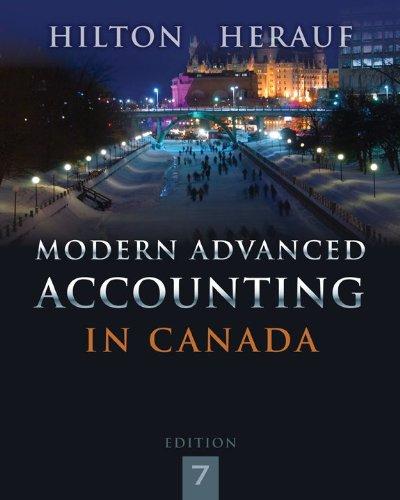On December 31, Year 1, RAV Company purchased 60% of the outstanding common shares of ENS Company
Question:
The adjusted trial balances for RAV and ENS for the year ended December 31,
Year 5, were as follows:
.png)
Additional Information
€¢ Each year, goodwill is evaluated to determine if there has been a loss. The recoverable impairment amount for ENS's goodwill was valued at $100,000 at the end of Year 4 and $75,000 at the end of Year 5.
€¢ RAV's inventories contained $200,000 of merchandise purchased from ENS at December 31, Year 5, and $250,000 at December 31, Year 4. During Year 5, sales from ENS to RAV were $600,000. Merchandise was priced at the same profit margin as applicable to other customers. RAV owed $150,000 to ENS at December 31, Year 5, and $157,000 at December 31, Year 4.
€¢ On July 1, Year 2, ENS purchased a building from RAV for $750,000. The building had an original cost of $800,000 and a carrying amount of $600,000 on RAV's books on July 1, Year 2. ENS estimated the remaining life of the building was 15 years at the time of the purchase from RAV.
€¢ ENS rented another building from RAV throughout the year for $5,000 per month.
€¢ RAV uses the equity method of accounting for its long-term investments.
€¢ Both companies pay tax at the rate of 40%. Ignore deferred income taxes when allocating and amortizing the acquisition differential.
Required:
(a) Prepare a consolidated income statement for the year ended December 31, Year 5.
(b) Prepare the current assets, property, plant, and equipment and intangible assets sections of the consolidated balance sheet at December 31, Year 5.
(c) Calculate non-controlling interest on the consolidated balance sheet at December 31, Year 4.
(d) If RAV had used the cost method instead of the equity method of account ing for its investment in ENS, would RAV's net income for Year 5 increase, decrease, or remain the same on
(i) Its separate-entity income statement?
(ii) The consolidated income statement?
Briefly explain.
Goodwill is an important concept and terminology in accounting which means good reputation. The word goodwill is used at various places in accounting but it is recognized only at the time of a business combination. There are generally two types of... Intangible Assets
An intangible asset is a resource controlled by an entity without physical substance. Unlike other assets, an intangible asset has no physical existence and you cannot touch it.Types of Intangible Assets and ExamplesSome examples are patented... Consolidated Income Statement
When talking about the group financial statements the consolidated financial statements include Consolidated Income Statement that a parent must prepare among other sets of consolidated financial statements. Consolidated Income statement that is... Salvage Value
Salvage value is the estimated book value of an asset after depreciation is complete, based on what a company expects to receive in exchange for the asset at the end of its useful life. As such, an asset’s estimated salvage value is an important... Balance Sheet
Balance sheet is a statement of the financial position of a business that list all the assets, liabilities, and owner’s equity and shareholder’s equity at a particular point of time. A balance sheet is also called as a “statement of financial...
Step by Step Answer:

Modern Advanced Accounting In Canada
ISBN: 9781259066481
7th Edition
Authors: Hilton Murray, Herauf Darrell





